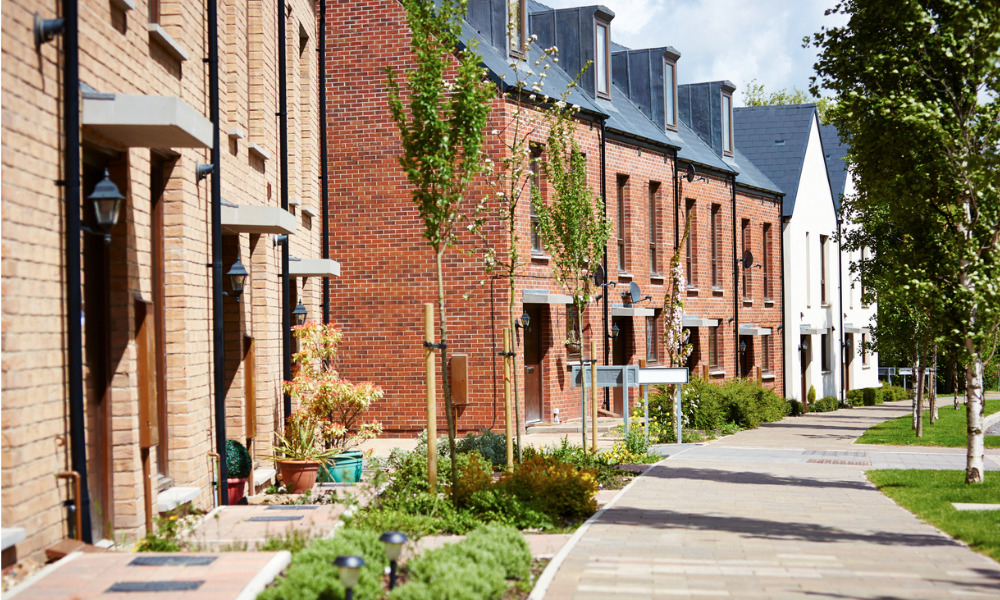Capital sees fastest rise in rents since 2013

London rents are rising at a record pace, with growth being driven by renters returning from outside the capital, the latest Hamptons Monthly Lettings Index has shown.
Over the last 12 months, rents in London have risen by 12.3%, the fastest growth rate since Hamptons began its records in 2013.
It is also the second successive month that rental growth in the capital has outpaced the average in Great Britain, reversing 26 consecutive months of London rents lagging behind the rest of the country.
So far this year, a record 30% of homes let in London have been let to someone who was previously living outside the capital.
It is also the highest figure in at least a decade and compares to a five-year pre-COVID average of 23%. Inner London has become home to the majority (65%) of these movers this year, up from a more normal 50-50 split between inner and outer London.
“With COVID being pushed further to the back of people’s minds, life in the capital is slowly returning to its new normal. Tenants are returning to the bright lights of the city and this is driving rental growth to record highs,” Aneisha Beveridge, head of research at Hamptons, said.
This year’s figure marks a sharp rebound from 2020 when just 12% of London tenants came from outside the capital. Hamptons noted that was the time when many renters left the city to move back in with parents or rent in a more affordable area.
According to Hampton, tenants leaving the home counties have been firmly behind the bounce back.
Around 55% of tenants who moved into the capital this year came from Berkshire, Buckinghamshire, Essex, Hertfordshire, Kent, or Surrey. This compares to a pre-COVID average of 40%. More than one in four tenants based in Wokingham, Hertsmere, and Epping Forest moved into London this year.
Read more: Rents rise in prime London areas.
Despite the resurgence in tenants moving from outside the capital, fewer are moving primarily for work. Just 31% of moves into London so far this year were primarily because of work, compared to an average of 40% in 2019.
Hamptons said tenants were increasingly likely to move to study or because they had sold their home or due to a change in family circumstances.
“The rise of remote working means that fewer tenants are moving to the capital specifically for work. In fact, a growing number of tenants choosing to live in London are working fully remotely and could live nearly anywhere in the country. The footloose nature of many jobs today means that it will be culture and lifestyle rather than employment that becomes the capital’s biggest draw,” Beveridge pointed out.
Hamptons also revealed that, nationally, the cost of a newly let home rose 9.8% over the last month to £1,125pcm, marking the fastest level of growth since records began. This record increase means that just over half of all rental growth recorded during the last five years (18.2%) across Great Britain has come within the last 12 months.
Regionally, rental growth continues to be led by the South West of England where rents rose 13.9% over the last 12 months. This was closely followed by London at 12.3%, and then the three Northern regions at 9.4%. This is the first time since the onset of COVID that London has been in the top three regions for rental growth in the country and this is due to the bounce back in Inner London rents.
“The current pace of London rental growth is predominantly down to the capital playing catch up with the rest of the country. Today, the average rent in London stands 103% above the average outside the capital,” Beveridge shared.
“While this gap is up from 96% a year ago, it remains below the 120% to 130% pre-COVID premium which has been eroded by strong rental growth outside the capital in recent years. But the current pace of rental growth in London is likely to push the premium closer to its pre-COVID level inside two years.”
Strong rental growth, Hamptons noted, continues to be underpinned by the lack of homes coming on to the market. There are 30% fewer properties available to rent this April than last, while the fall from pre-COVID levels comes in at almost two-thirds (down 61%).
The North West (down 76%), Yorkshire and Humber (down 67%), and London (down 64%) have recorded the largest falls in rental stock anywhere in the country, with few signs of more homes coming on to the market.
The Hamptons Lettings Index uses data from the Countrywide Group to track changes in the cost of renting. The index is based on the 90,000 homes let and managed by Countrywide each year, adjusting for their location and type. It is based on achieved rather than advertised rents.



